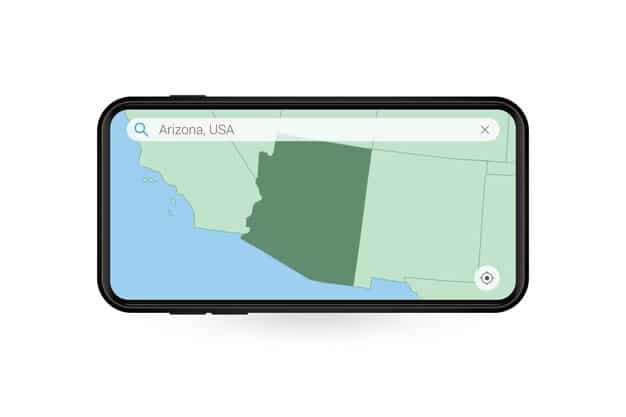Stop Location Tracking: 3 Essential Phone Settings to Change Today

Navigating the digital landscape requires vigilance, and understanding how to protect your personal data is paramount. To significantly enhance your online privacy and prevent unwanted surveillance, you can easily implement three crucial settings on your smartphone to limit location tracking, thereby safeguarding your whereabouts from being extensively monitored by apps and device manufacturers.
In an increasingly interconnected world, our smartphones have become extensions of ourselves, holding vast amounts of personal data. Yet, this convenience often comes at a cost: the persistent monitoring of our location. Whether for personalized ads, targeted services, or simply compiling user data, location tracking is a pervasive feature. For those seeking to preserve their digital autonomy, understanding how to effectively stop location tracking: 3 settings to change on your phone today can be a pivotal step towards enhanced online privacy.
Understanding the Scope of Location Tracking
Location tracking, while seemingly innocuous, extends far beyond simple GPS navigation. It encompasses a complex web of technologies designed to pinpoint your geographical position, often without your explicit, conscious consent. This digital breadcrumb trail can be compiled from various sources, forming a detailed profile of your movements and habits.
The implications of this pervasive tracking are broad, ranging from personalized advertising that might feel eerily precise to more significant concerns about data privacy and potential surveillance. Many applications, even those not directly related to navigation, request and utilize location data for functionalities that may not always be apparent to the user.
How Your Phone Tracks You
Your smartphone employs several methods to determine your location, often simultaneously, creating a robust, albeit intrusive, tracking system. These methods vary in precision and energy consumption, but together they paint a remarkably accurate picture of your whereabouts.
- GPS (Global Positioning System): This is the most common and accurate method, using satellite signals to pinpoint your exact coordinates. It’s essential for navigation apps but is also extensively used by many other applications.
- Wi-Fi Scanning: Even when you’re not connected to a Wi-Fi network, your phone can scan for nearby Wi-Fi hotspots and use their known locations to determine your approximate position. This is particularly effective in urban areas where Wi-Fi density is high.
- Cell Tower Triangulation: Your phone communicates with nearby cell towers. By measuring the signal strength from multiple towers, your device can estimate your location, especially useful in areas with weak GPS signals or indoors.
- Bluetooth Beacons: Low-energy Bluetooth signals from beacons in retail stores or public spaces can be used to track your presence in specific locations, offering precise indoor positioning.
Beyond these technical mechanisms, it’s also crucial to consider the various entities that collect this data. App developers, device manufacturers, cellular carriers, and even third-party data brokers accumulate this information. While some data collection is legitimate for app functionality, much of it is used for commercial purposes, raising significant privacy questions.
Setting 1: Disable Location Services Entirely (When Not Needed)
The most straightforward and effective method to curb location tracking is to simply turn off all location services on your device. While this might seem drastic, it offers the highest level of privacy control. Engaging this setting means no application or system process can access your current geographical position.
The “Nuclear Option” for Privacy
Turning off location services completely means that apps like maps, weather, or ride-sharing services will lose their primary functionality. However, for periods when you are not actively relying on these services, disabling location can significantly reduce your digital footprint. Consider this a temporary measure for maximum privacy, activating it only when your location is genuinely required.
Accessing this setting typically involves navigating through your phone’s main settings menu. On both iOS and Android devices, there’s a dedicated section for “Location” or “Privacy & Security” where you can toggle this master switch. This action immediately stops all apps and services from receiving your location data.
It’s important to remember that some device functionalities might be impaired or cease to work when location services are off. For instance, emergency services might have a harder time locating you in an urgent situation, as many utilize device location data as a primary source. Therefore, weigh the benefits of enhanced privacy against the potential inconvenience or safety implications before leaving this setting off permanently.
This setting is particularly useful when you are in a sensitive location, attending a private event, or simply wish to have a blackout period from all location-based tracking. Many users choose to disable this feature overnight or when they are at home and do not require constant location updates from their device.

Setting 2: Review and Revoke App-Specific Location Permissions
While disabling all location services is effective, it’s often impractical for daily use. A more nuanced approach involves managing location permissions on an app-by-app basis. This allows you to grant access only to those applications that genuinely need your location to function, and to revoke it from those that don’t.
Granular Control Over Your Data
Both Android and iOS offer robust controls for managing app permissions. You can typically find these settings under “Privacy,” “Permissions,” or “App Management” within your device’s main settings. Here, you’ll see a list of all your installed applications and the permissions they have requested, including access to your location.
When reviewing these permissions, consider whether an app truly requires your precise location. A mapping app clearly needs it, but does a photo editing app? Often, apps request more permissions than strictly necessary, either for added functionality or to collect data for advertising purposes. Prioritize privacy by granting only “While Using App” access or “Never” for most applications.
- “Always Allow” or “Allow all the time”: This grants the app persistent access to your location, even when you are not actively using it. This is the most intrusive option and should be reserved only for essential apps where background location is critical (e.g., certain safety or tracking apps, if specifically desired).
- “Allow While Using App” or “Allow only while using the app”: This option provides location data to the app only when it is open and actively in use. This strikes a balance between functionality and privacy for most applications that require location.
- “Ask Next Time” or “Ask every time”: This prompts the app to ask for your location each time it attempts to access it, giving you real-time control.
- “Don’t Allow” or “Deny”: This completely revokes location access for the specific app. Many apps will still function, albeit with reduced features, if they don’t get location data.
Regularly auditing your app permissions is a good practice. Apps are frequently updated, and sometimes these updates can silently alter default permission requests. Taking a few minutes each month to review your app permissions can significantly enhance your privacy posture and ensure you’re not inadvertently sharing more data than you intend.
Remember that even if an app promises anonymized data collection, there’s always a risk of re-identification when location data is involved, especially when combined with other personal identifiers. Being discerning about which apps get your location information is a critical step in maintaining digital self-defense.
Setting 3: Disable System Services Location and Location History
Beyond individual app permissions, your smartphone’s operating system itself utilizes location data for various “system services.” These background services can track your location for purposes like emergency calls, time zone settings, or even personalized advertising from the device manufacturer. Furthermore, both iOS and Android maintain a “Location History” or “Location Timeline” that logs your past movements.
Managing OS-Level Location Data
These system-level settings are often buried deeper within your phone’s privacy menus. For iOS users, navigate to “Settings” > “Privacy & Security” > “Location Services” > “System Services.” Here, you’ll find a granular list of features using your location. While some, like “Emergency Calls & SOS,” are vital, others, such as “Location-Based Ads” or “Product Improvement,” can often be safely disabled without impacting core functionality.
For Android users, similar settings are usually found under “Settings” > “Location” > “Google Location Services” or “Location Services.” Options like “Google Location Accuracy,” “Wi-Fi scanning,” and “Bluetooth scanning” can be toggled off to reduce the precision and frequency of location data collection by the OS itself. Be mindful that turning off “Google Location Accuracy” might slightly reduce the precision of your GPS, which relies on Wi-Fi and Bluetooth for speed.
Perhaps equally important is managing your “Location History” or “Location Timeline.” This feature, enabled by default in many cases, stores a detailed log of your past movements, linked to your Google or Apple account. Disabling this feature means your past whereabouts are not continuously recorded, preventing the creation of a comprehensive movement profile over time.
To disable location history:
- Google Location History (Android & Google Accounts): Go to your Google Account activity controls (myactivity.google.com/activitycontrols), find “Location History,” and pause it. You can also delete past activity from here.
- Significant Locations (iOS): Navigate to “Settings” > “Privacy & Security” > “Location Services” > “System Services” > “Significant Locations.” Here you can view and clear your history, and toggle the feature off.
Disabling these system services and clearing your location history is a critical step in preventing the deep profiling that device manufacturers and major tech companies engage in. While practical considerations might dictate keeping some essential services enabled, being aware of and managing these background trackers is key to comprehensive privacy protection.
The Trade-Offs of Enhanced Location Privacy
While the benefits of curbing location tracking—greater privacy, reduced data exposure, and potentially fewer targeted ads—are clear, it’s also important to acknowledge the trade-offs. Disabling or restricting location services can impact the functionality and convenience of many popular applications and features.
Navigation apps, for instance, become largely unusable without location access. Weather apps can’t provide localized forecasts. Ride-sharing services won’t know where to pick you up. Some emergency features on your phone rely on precise location data to assist first responders. Even seemingly simple tasks like setting up a new Wi-Fi network or using Bluetooth devices can sometimes require temporary access to location data for scanning purposes.
The key is to find a balance that suits your individual needs and comfort level. For some, maximum privacy at the cost of some convenience is acceptable. For others, the utility of location-based services outweighs extreme privacy concerns, as long as they feel they maintain some level of control.
Consider the “just-in-time” principle: only enable location services when you genuinely need them. Turn them on for navigation, then turn them off afterward. Grant “While Using App” permissions whenever possible, and regularly review what data your apps are collecting. This mindful approach allows you to harness the benefits of location services without constantly broadcasting your whereabouts.
Furthermore, understand that completely eliminating location tracking is nearly impossible in a connected world. Your cellular carrier can always infer your approximate location based on cell tower connections, and your IP address can reveal your general geographic area. These settings primarily target the granular tracking performed by your device’s GPS, Wi-Fi, and Bluetooth, and by the apps installed on it.
Beyond Phone Settings: Holistic Privacy Practices
While adjusting your phone’s location settings is a crucial step, it’s part of a broader strategy for digital privacy. True online privacy is achieved through a combination of technical adjustments and mindful online behavior. Your phone’s settings are just one layer of defense.
Complementary Privacy Measures
Consider integrating other practices into your digital routine to create a more comprehensive privacy shield. Using a VPN (Virtual Private Network) can mask your IP address and encrypt your internet traffic, providing an additional layer of anonymity. While a VPN doesn’t hide your physical phone’s location, it can obscure your online origin, making it harder for websites and services to pinpoint your general area.
Being cautious about what information you share on social media is also paramount. Geotagging photos or posts can inadvertently reveal your location to a wider audience, even if your phone’s internal settings are locked down. Adjust privacy settings on social media platforms to limit who can see your content and location-tagged posts.
Regularly reviewing the privacy policies of the apps and services you use can also provide valuable insight into their data collection practices. While often lengthy and complex, these documents contain crucial information about how your data is handled. Be wary of apps that seem overly intrusive or request permissions that don’t align with their advertised purpose.
Finally, keeping your device’s operating system and all installed applications updated is vital for security. Software updates often include patches for vulnerabilities that could otherwise be exploited to track or access your data. A robust cybersecurity posture acts as a foundational layer for all other privacy efforts.
By combining these preventative measures – from managing your phone’s location settings to adopting broader privacy habits – you can significantly reduce your digital footprint and regain a greater degree of control over your personal information in an increasingly data-driven world. It’s an ongoing process, but one that is increasingly necessary for safeguarding your digital and physical privacy.
The Future of Location Privacy: Emerging Trends
The landscape of online privacy and location tracking is constantly evolving. As technology advances, so do the methods used for data collection, prompting a continuous cat-and-mouse game between privacy advocates and data-hungry entities. Understanding these emerging trends can help you anticipate future challenges and opportunities in maintaining your digital privacy.
New Frontiers in Tracking and Protection
One notable trend is the increasing sophistication of location inference techniques. Even without direct GPS data, advanced algorithms can predict your movements based on anonymized aggregated data, AI pattern recognition, and even sensor data from your device, such as changes in altitude or step count. This means that simply turning off GPS might not be enough to prevent all forms of location inference in the future.
Conversely, there’s a growing push for “privacy-preserving technologies.” Differential privacy, for instance, adds statistical noise to datasets to obscure individual identities while still allowing for aggregate analysis. Federated learning allows AI models to learn from decentralized data on individual devices without collecting raw data centrally, offering a potential path for personalized services without sacrificing privacy.
Legislative efforts like the GDPR in Europe and various state-level privacy laws in the United States are also playing a significant role. These regulations aim to give individuals more control over their data, including explicit consent requirements for location tracking and the right to have data deleted. As these laws mature and expand, they could reshape how companies collect and use location information.
Furthermore, public awareness about data privacy is at an all-time high. This increased scrutiny is pushing tech companies to implement more transparent and user-friendly privacy controls. The shift towards “privacy by design,” where privacy considerations are baked into product development from the outset, also signals a positive direction.
However, the convenience factor remains a strong driver for data sharing. Many users willingly trade some privacy for hyper-personalized services or frictionless experiences. Educating oneself about the true value of data and the potential risks of unrestricted sharing will be crucial in empowering individuals to make informed decisions moving forward. The future of location privacy hinges on a delicate balance between technological innovation, regulatory frameworks, and informed user choices.
| Key Setting | Privacy Impact |
|---|---|
| 🚫 Disable All Location Services | Maximum privacy; great for temporary shutdowns but impairs many app functions. |
| ⚙️ Manage App Permissions | Granular control; allows essential apps access while denying others; balanced approach. |
| 📊 Disable System Services & History | Stops OS-level tracking and prevents historical logging; crucial for deep privacy. |
| 🌐 Use VPN & Mindful Social Media | Complementary actions for holistic online privacy, going beyond device settings. |
Frequently Asked Questions About Location Tracking
No, turning off location services will not negatively affect your phone’s overall processing performance or battery life beyond what is directly related to location-based features. In fact, it might slightly improve battery life by preventing apps from constantly requesting and using your GPS or Wi-Fi scanning capabilities in the background for location updates.
No, navigation apps like Google Maps or Apple Maps require your location services to be enabled to provide real-time directions and pinpoint your current position. If you disable location services entirely, these apps will not be able to function as intended. You would need to re-enable location services for them to work.
While disabling your phone’s location settings significantly limits tracking, complete anonymity is difficult. Your cellular carrier can still infer your general location based on cell tower connections. Additionally, your IP address can reveal your approximate geographic region when you are online. These methods offer less precision but are harder to fully disable.
It is recommended to review your app-specific location permissions regularly, ideally once every few months or whenever you install a new app. App updates can sometimes alter permission requests, and a periodic audit ensures you maintain control over which applications have access to your sensitive location data.
“Significant Locations” (also known as Frequent Locations or Location History) on iOS is a feature that learns locations you frequently visit to provide personalized services. Disabling it prevents your iPhone from creating a detailed historical record of your whereabouts, enhancing your privacy by stopping the profiling of your daily movements over time.
Conclusion
Empowering yourself with knowledge about your smartphone’s privacy settings is a crucial step in navigating the digital age responsibly. By implementing these three core adjustments—selectively disabling location services, meticulously managing app-specific permissions, and taking control of system-level location data and history—you can significantly enhance your personal privacy. While the convenience of location-based services is undeniable, a balanced and informed approach to their use allows us to harness technology’s benefits without inadvertently compromising our digital well-being. Ultimately, maintaining a vigilant stance on how our data is collected and used is not just a technical exercise, but a fundamental right in an increasingly interconnected world.





